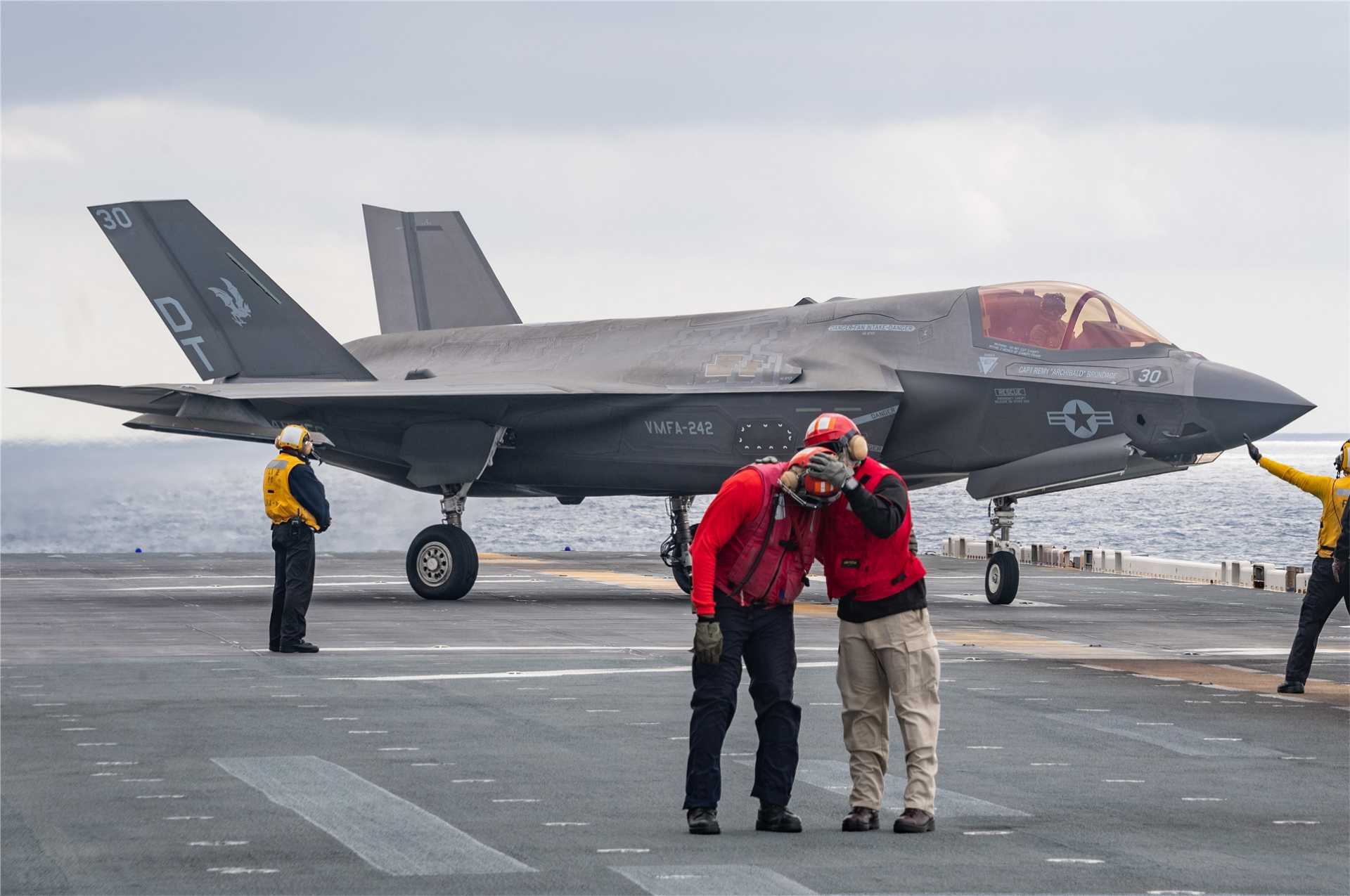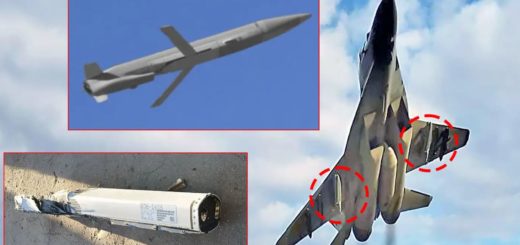Exclusive: US Ambitious Goal to Procure 2,456 F-35 Fighter Jets for US Air Force – US Marine Corps – US Navy

{loadposition bannertop}
{loadposition sidebarpub}
The U.S. government’s objective of procuring 2,456 F-35 Lightning II aircraft for the U.S. Air Force, U.S. Marine Corps, and U.S. Navy marks a monumental effort to modernize and enhance the U.S. military’s air combat capabilities. As outlined in the latest report published by Lockheed Martin in January 2025, this ambitious procurement plan remains at the heart of the F-35 program, which continues to advance with strong production numbers, new international commitments, and the integration of cutting-edge technologies.Follow Army Recognition on Google News at this link
A U.S. F-35B Lightning II fighter aircraft from Marine Fighter Attack Squadron (VMFA) 242 taxis on the flight deck of the forward-deployed amphibious assault ship USS America (LHA 6) during flight operations in the Philippine Sea on February 2, 2025. (Picture source: U.S. DoD)
The 2,456 aircraft goal reflects the U.S. military’s long-term strategy to replace aging fleets with state-of-the-art, multi-role stealth fighters capable of dominating both near-peer and asymmetrical threats. The program includes the production of a diverse range of F-35 variants—specifically the F-35A, F-35B, and F-35C models—designed to meet the specific needs of the Air Force, Marine Corps, and Navy. This ambitious plan not only ensures that the U.S. military maintains a technological edge but also guarantees that the aircraft can be adapted to a wide variety of operational environments, from conventional airfields to aircraft carriers and amphibious assault ships.
As of late 2024, the F-35 program had already delivered 1,102 aircraft to various branches of the U.S. military and international customers. Of those, 797 were F-35A variants for the Air Force, 203 were F-35B variants for the Marine Corps, and 102 were F-35C variants for the Navy. These deliveries are a testament to the program’s steady progress toward meeting the U.S. government’s procurement goal. With a production backlog of 408 aircraft, Lockheed Martin remains well-positioned to continue fulfilling this high-demand order.
Notably, the U.S. Air Force, which has the largest share of the F-35 procurement objective, continues to place significant emphasis on the F-35A, the conventional takeoff and landing variant. This aircraft is expected to replace aging fleets such as the F-16 Fighting Falcon and F-15 Eagles, which have been in service for decades. The U.S. Marine Corps, on the other hand, has embraced the unique capabilities of the F-35B, a short takeoff and vertical landing (STOVL) variant, allowing for greater flexibility in deployment and operations from amphibious assault ships, forward operating bases, and austere airfields. The U.S. Navy’s acquisition of the carrier-based F-35C variant also plays a pivotal role in enhancing the Navy’s air power projection, with the F-35C offering unmatched stealth, range, and advanced sensor capabilities for naval aviation.
Lockheed Martin’s commitment to meeting the U.S. government’s procurement goal is further reinforced by the progress in technology upgrades and production ramp-ups. The F-35 program continues to integrate new capabilities, such as the Technology Refresh 3 (TR-3) upgrades, which enhance the aircraft’s avionics, sensors, and data-processing capacity. The implementation of these advancements ensures that the F-35 remains at the cutting edge of stealth and multi-role capability, enabling it to carry out a wide range of mission sets, from intelligence gathering and close air support to air superiority and strike missions.
In addition to domestic procurements, the F-35 program has garnered significant international interest, with 20 countries now committed to purchasing the aircraft. These international agreements not only bolster the F-35’s position as the world’s premier fifth-generation fighter but also play a key role in helping the U.S. government meet its procurement objectives. Through Foreign Military Sales (FMS) agreements, allied nations such as the U.K., Japan, Israel, and others have joined the program, adding to the overall fleet and supporting the continued evolution of the aircraft’s capabilities.
While the U.S. government’s goal of procuring 2,456 F-35s is a monumental task, the program’s ongoing progress underscores its long-term viability. Lockheed Martin, in close collaboration with the Joint Program Office (JPO), has consistently demonstrated its ability to deliver on commitments, meeting both production and delivery milestones despite challenges related to cost management, inflation, and supply chain disruptions. The continued expansion of the F-35 production lines, including new facilities for final assembly and checkout, will be critical in ensuring the program can scale to meet the high demand from both U.S. military branches and international partners.
As the program moves into 2025 and beyond, the U.S. government’s procurement goal for 2,456 aircraft remains a key driver of the F-35’s development. The aircraft’s growing global footprint, combined with technological advancements and production ramp-ups, positions the F-35 as an indispensable asset for U.S. and allied forces. With continued investments in sustainment and upgrades, the F-35 will remain at the forefront of modern military aviation, providing unmatched capabilities for the U.S. Air Force, Marine Corps, and Navy as they prepare for future conflicts and strategic challenges.

{loadposition bannertop}
{loadposition sidebarpub}
The U.S. government’s objective of procuring 2,456 F-35 Lightning II aircraft for the U.S. Air Force, U.S. Marine Corps, and U.S. Navy marks a monumental effort to modernize and enhance the U.S. military’s air combat capabilities. As outlined in the latest report published by Lockheed Martin in January 2025, this ambitious procurement plan remains at the heart of the F-35 program, which continues to advance with strong production numbers, new international commitments, and the integration of cutting-edge technologies.
Follow Army Recognition on Google News at this link
A U.S. F-35B Lightning II fighter aircraft from Marine Fighter Attack Squadron (VMFA) 242 taxis on the flight deck of the forward-deployed amphibious assault ship USS America (LHA 6) during flight operations in the Philippine Sea on February 2, 2025. (Picture source: U.S. DoD)
The 2,456 aircraft goal reflects the U.S. military’s long-term strategy to replace aging fleets with state-of-the-art, multi-role stealth fighters capable of dominating both near-peer and asymmetrical threats. The program includes the production of a diverse range of F-35 variants—specifically the F-35A, F-35B, and F-35C models—designed to meet the specific needs of the Air Force, Marine Corps, and Navy. This ambitious plan not only ensures that the U.S. military maintains a technological edge but also guarantees that the aircraft can be adapted to a wide variety of operational environments, from conventional airfields to aircraft carriers and amphibious assault ships.
As of late 2024, the F-35 program had already delivered 1,102 aircraft to various branches of the U.S. military and international customers. Of those, 797 were F-35A variants for the Air Force, 203 were F-35B variants for the Marine Corps, and 102 were F-35C variants for the Navy. These deliveries are a testament to the program’s steady progress toward meeting the U.S. government’s procurement goal. With a production backlog of 408 aircraft, Lockheed Martin remains well-positioned to continue fulfilling this high-demand order.
Notably, the U.S. Air Force, which has the largest share of the F-35 procurement objective, continues to place significant emphasis on the F-35A, the conventional takeoff and landing variant. This aircraft is expected to replace aging fleets such as the F-16 Fighting Falcon and F-15 Eagles, which have been in service for decades. The U.S. Marine Corps, on the other hand, has embraced the unique capabilities of the F-35B, a short takeoff and vertical landing (STOVL) variant, allowing for greater flexibility in deployment and operations from amphibious assault ships, forward operating bases, and austere airfields. The U.S. Navy’s acquisition of the carrier-based F-35C variant also plays a pivotal role in enhancing the Navy’s air power projection, with the F-35C offering unmatched stealth, range, and advanced sensor capabilities for naval aviation.
Lockheed Martin’s commitment to meeting the U.S. government’s procurement goal is further reinforced by the progress in technology upgrades and production ramp-ups. The F-35 program continues to integrate new capabilities, such as the Technology Refresh 3 (TR-3) upgrades, which enhance the aircraft’s avionics, sensors, and data-processing capacity. The implementation of these advancements ensures that the F-35 remains at the cutting edge of stealth and multi-role capability, enabling it to carry out a wide range of mission sets, from intelligence gathering and close air support to air superiority and strike missions.
In addition to domestic procurements, the F-35 program has garnered significant international interest, with 20 countries now committed to purchasing the aircraft. These international agreements not only bolster the F-35’s position as the world’s premier fifth-generation fighter but also play a key role in helping the U.S. government meet its procurement objectives. Through Foreign Military Sales (FMS) agreements, allied nations such as the U.K., Japan, Israel, and others have joined the program, adding to the overall fleet and supporting the continued evolution of the aircraft’s capabilities.
While the U.S. government’s goal of procuring 2,456 F-35s is a monumental task, the program’s ongoing progress underscores its long-term viability. Lockheed Martin, in close collaboration with the Joint Program Office (JPO), has consistently demonstrated its ability to deliver on commitments, meeting both production and delivery milestones despite challenges related to cost management, inflation, and supply chain disruptions. The continued expansion of the F-35 production lines, including new facilities for final assembly and checkout, will be critical in ensuring the program can scale to meet the high demand from both U.S. military branches and international partners.
As the program moves into 2025 and beyond, the U.S. government’s procurement goal for 2,456 aircraft remains a key driver of the F-35’s development. The aircraft’s growing global footprint, combined with technological advancements and production ramp-ups, positions the F-35 as an indispensable asset for U.S. and allied forces. With continued investments in sustainment and upgrades, the F-35 will remain at the forefront of modern military aviation, providing unmatched capabilities for the U.S. Air Force, Marine Corps, and Navy as they prepare for future conflicts and strategic challenges.






